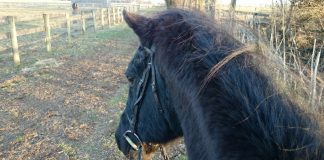Editor’s note: Due to legal changes that occurred after this article was originally published, service horses are not currently protected to fly on all airlines. Individual airlines may choose if they will permit a service horse in specific cases.
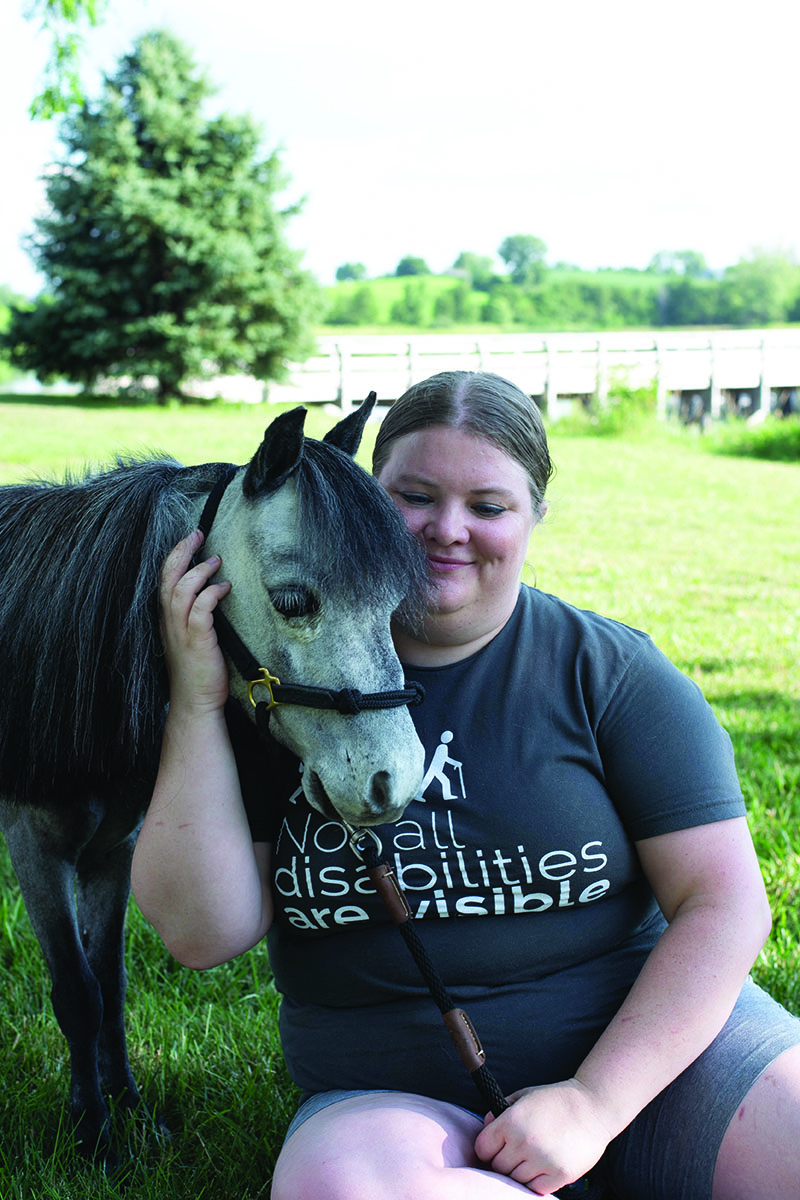
Abrea Hensley was one of the first travelers to bring her American Miniature Horse on board an airplane in the passenger area. LA Blues A Little Flirtatious, aka “Flirty,” is 27″ tall and weighs 136 pounds. The pair flew from Omaha, Neb., to Chicago, Ill., which is about an hour-and-a-half flight. They went to visit some family that Hensley had been unable to see in several years.
“Taking her to the airport and on a plane was quite an experience,” says Hensley. “Everyone at the airport was very interested in the fact that a tiny horse was walking around. We got a lot of questions from other travelers.”
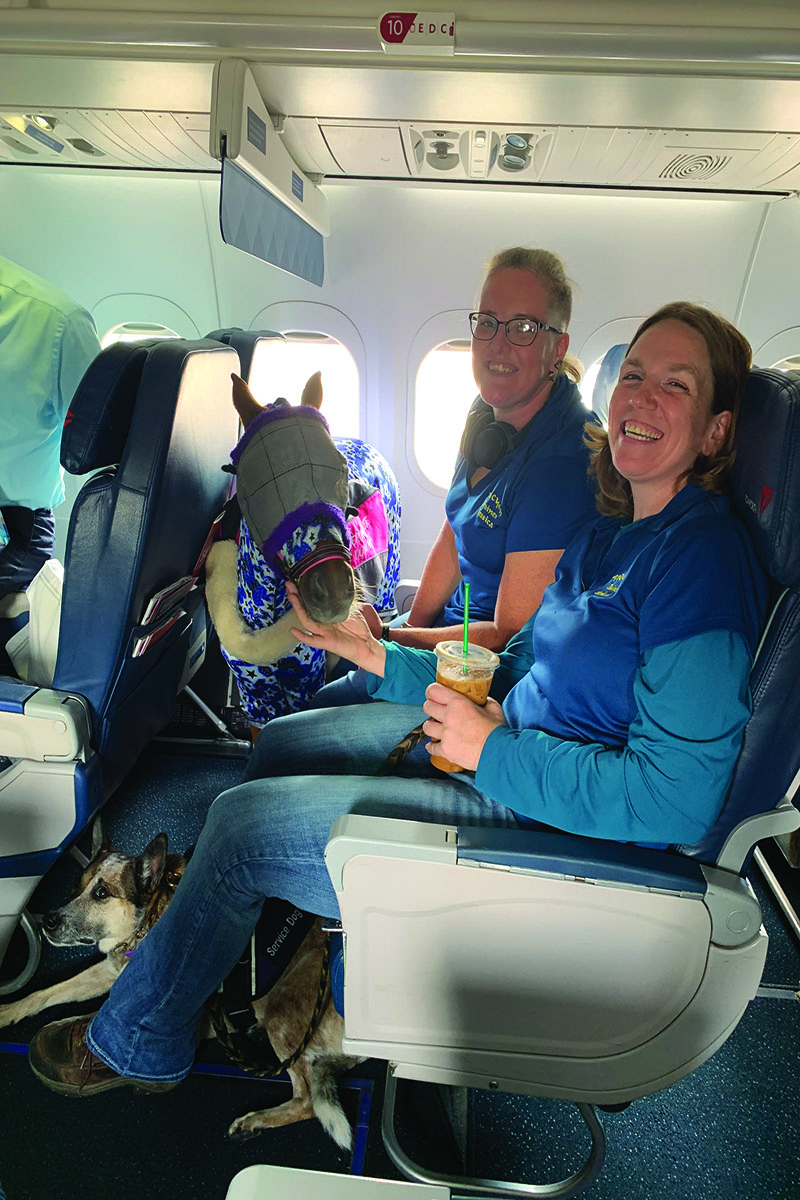
Why Equine Service Animals?
Hensley chose a Miniature Horse as an equine service animal because she is allergic to dogs. She takes Flirty everywhere she goes. The mare is trained to provide mobility assistance, medical alerts and responses.
“Before Flirty, I couldn’t accomplish simple tasks, like grocery shopping, because of my disabilities,” she says. “Now, with Flirty’s help, I can live an independent and fulfilled life. I can go grocery shopping, or to the movies, or see my friends.”
Hensley and other equine service Miniature Horse owners who travel with their horses created a media buzz, and along with it, some negative comments. Jessica Wellman, an equine service Miniature Horse handler and service animal trainer from Florida, was invited to appear on The Dr. Oz Show. She and her horse, Honey, flew to New York to address the criticisms. Wellman suffers from a degenerative autoimmune disease and needs Honey’s support when she walks.
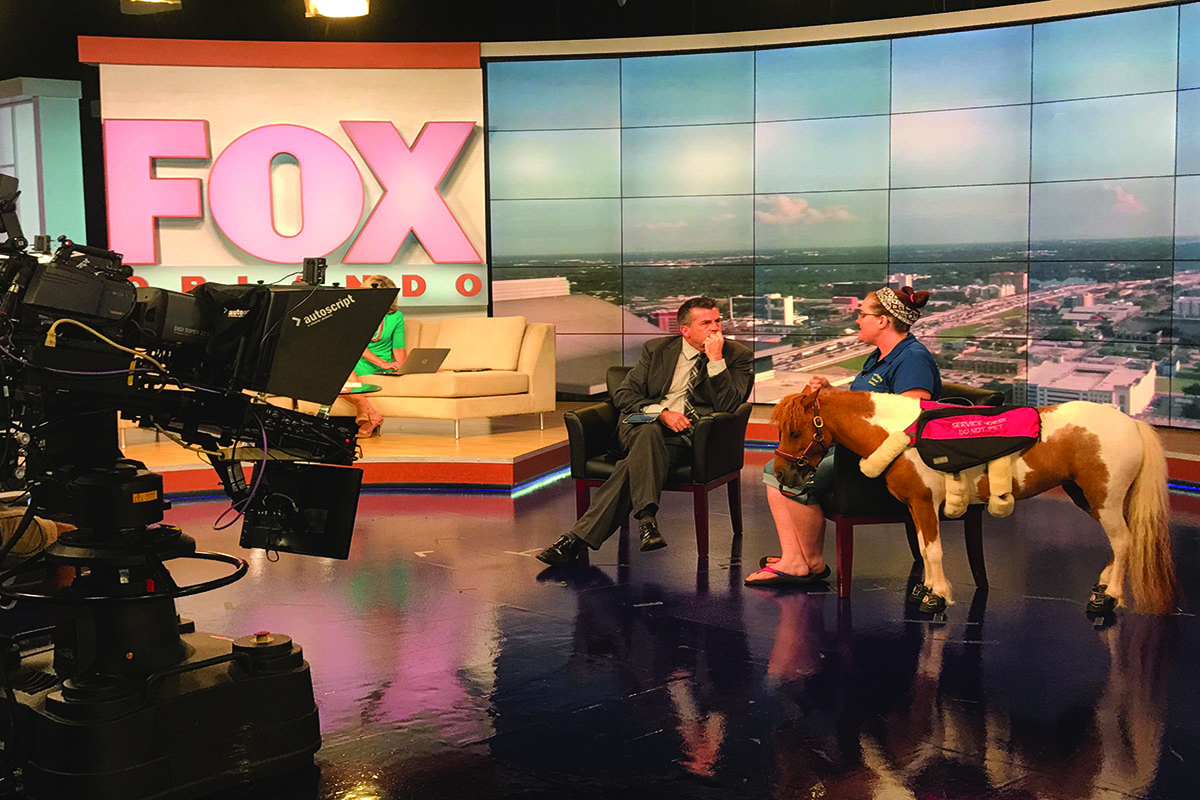
“They are so unusual that people aren’t ready, and people aren’t educated unless they need a service animal,” Wellman said on the show. “People often get service animals confused with emotional support animals.”
Equine service animals, like their canine counterparts, must meet strict training and certification requirements. Flirty, Honey and their peers are potty trained, taught to retrieve dropped items, and more. Wellman trains both species for service work and says horses have advantages over dogs.
“It takes a few years to fully train a service animal,” she says. “Since dogs have shorter lifespans, they can’t work as long as horses. Dogs also have a more flexible spine, whereas horses are built to better support someone leaning on them for mobility. If I’m in a wheelchair, she can pull me up ramps that are too steep.”
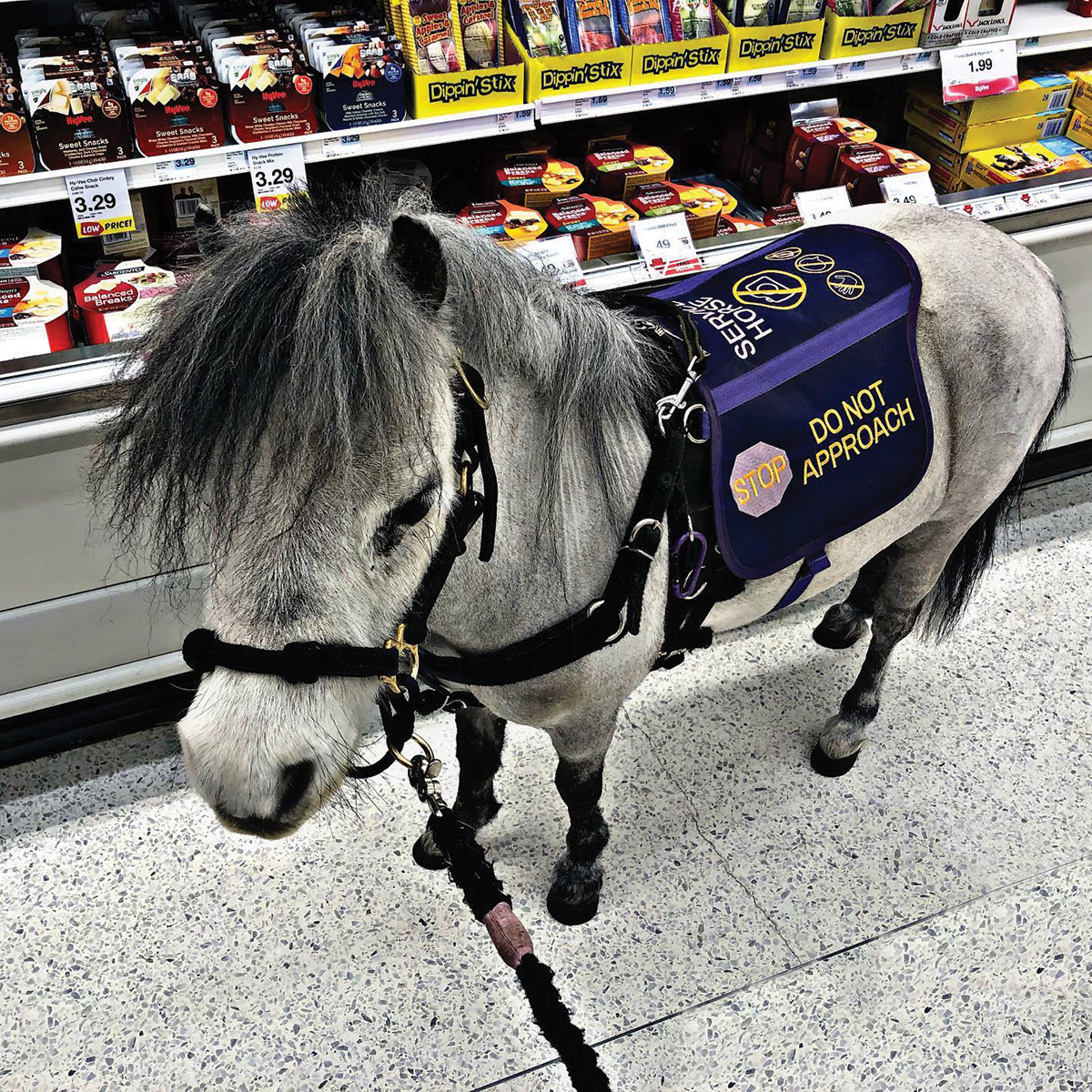
Preparing an Equine Service Animal for Takeoff
Some travelers dread the takeoff and landing. Others who suffer from motion sickness medicate with Dramamine. Flirty took the ride in stride. Being on the plane was fairly easy, according to Hensley. She traveled with a reporter, and they were seated in the bulkhead row of the airplane, where Flirty filled the foot space. The area was about the size of the trailer Flirty travels in, so she was comfortable.
“I fed her treats during takeoff and landing to help with any pressure in her ears,” says Hensley. “Once we reached cruising altitude, she spent most of the flight napping.”
Like any horse that travels, equine service Miniature Horses require an official health certificate. During that visit, Hensley also discussed what she could do to minimize any colic risks. They decided to feed Flirty hay up until the time that they left for the airport. Then she would also receive treats during their time at the airport and the flight itself to keep food in her stomach and minimize any digestive risks.
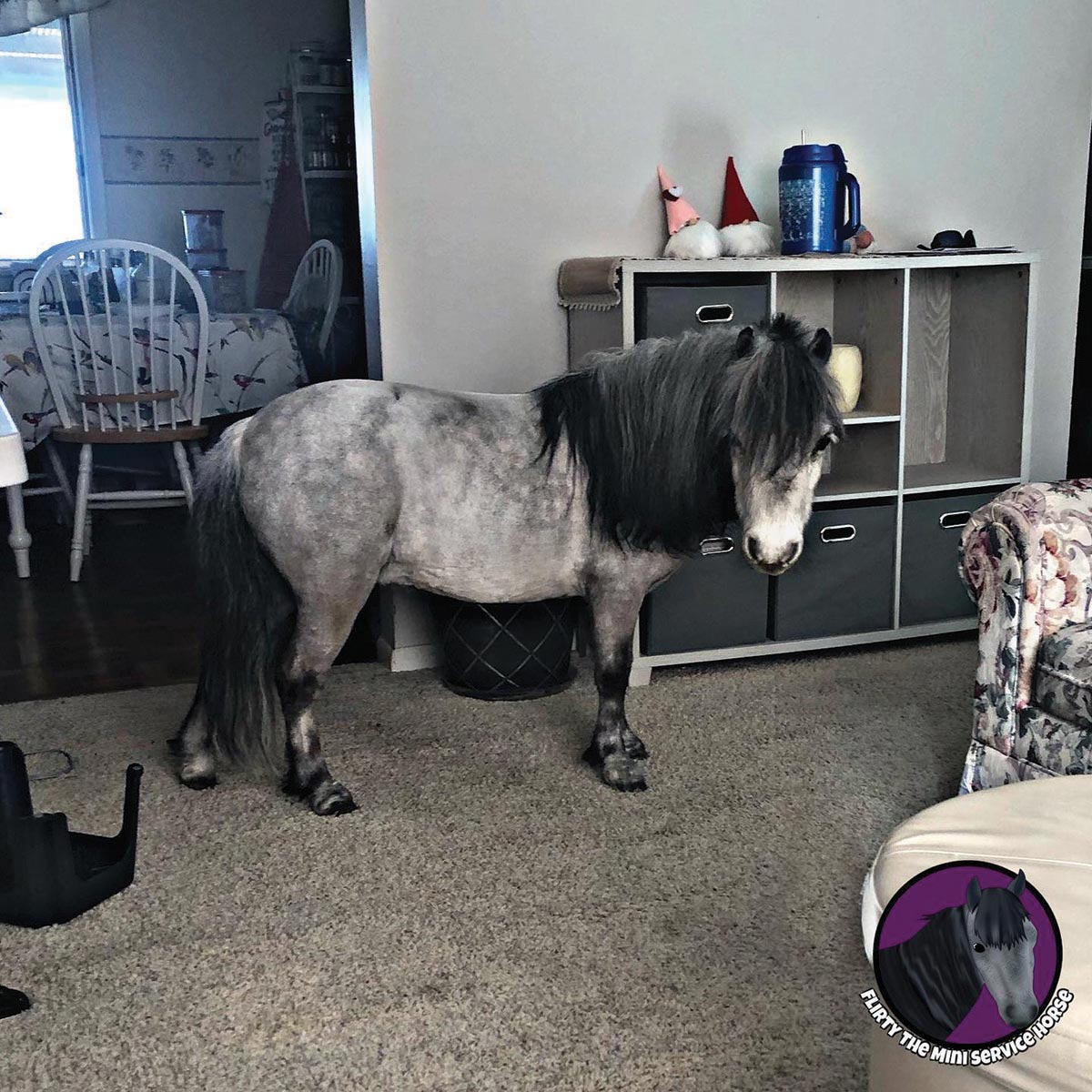
“We also did specialized training to prepare her for the flight; we rode a city bus to simulate turbulence,” says Hensley. “We spent time driving—she rides in my car—with quick acceleration and deceleration to simulate takeoff and landing.”
Working Gear for an Equine Service Animal
Equine service animals must follow the same American with Disabilities Act (ADA) guidelines as service dogs. That means they must always be under their handler’s control, harnessed or leashed. The equine service animals are outfitted in harnesses, much like a dog harness, and wear the vest that distinguishes all service animals.
Wellman follows a specific hoof trimming protocol that gives minis better barefoot traction on indoor surfaces, but equine service animals are often seen wearing hoof boots. A sheet or fitted bodysuit can be used to keep any loose hairs or allergens from bothering other passengers.
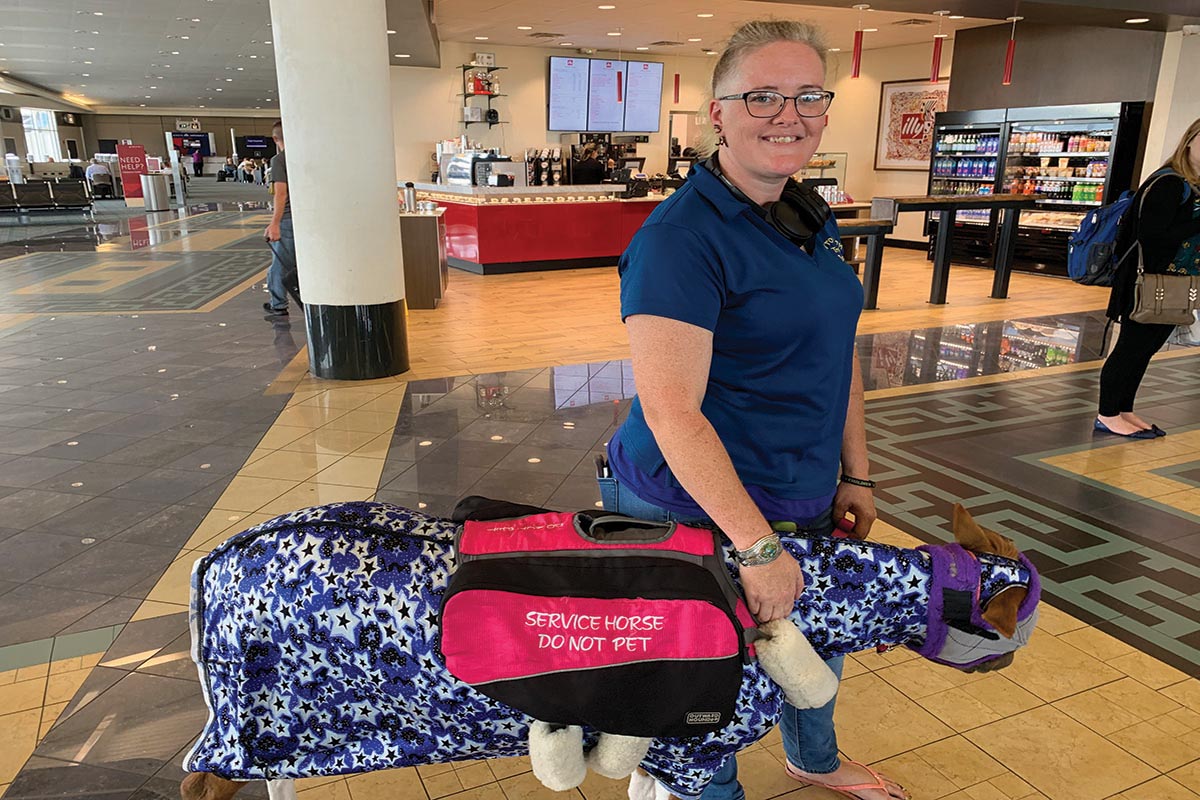
It’s easy to imagine how gear can be easily modified to accommodate Minis. And equestrians know how smart horses are. With patience and proper training, they can be taught nearly anything—even potty training. Yes, horses can be taught to pee or poop on command and ask to go out.
“Flirty is potty trained,” says Hensley. “The ADA requires that all equine service animals be potty trained. I had her go before we left home, then we also made a stop at the service animal relief station at the airport, just to be sure. She only had about an hour and 45 minutes where she couldn’t go to the bathroom while we were on the plane, which is well within her abilities.”
Wellman explains that it is actually fairly easy to housebreak a miniature horse. The bigger challenge is teaching them not to relieve themselves in the car.
“That’s a little harder, because what’s the first thing they do when they get in the trailer? Go to the bathroom!”
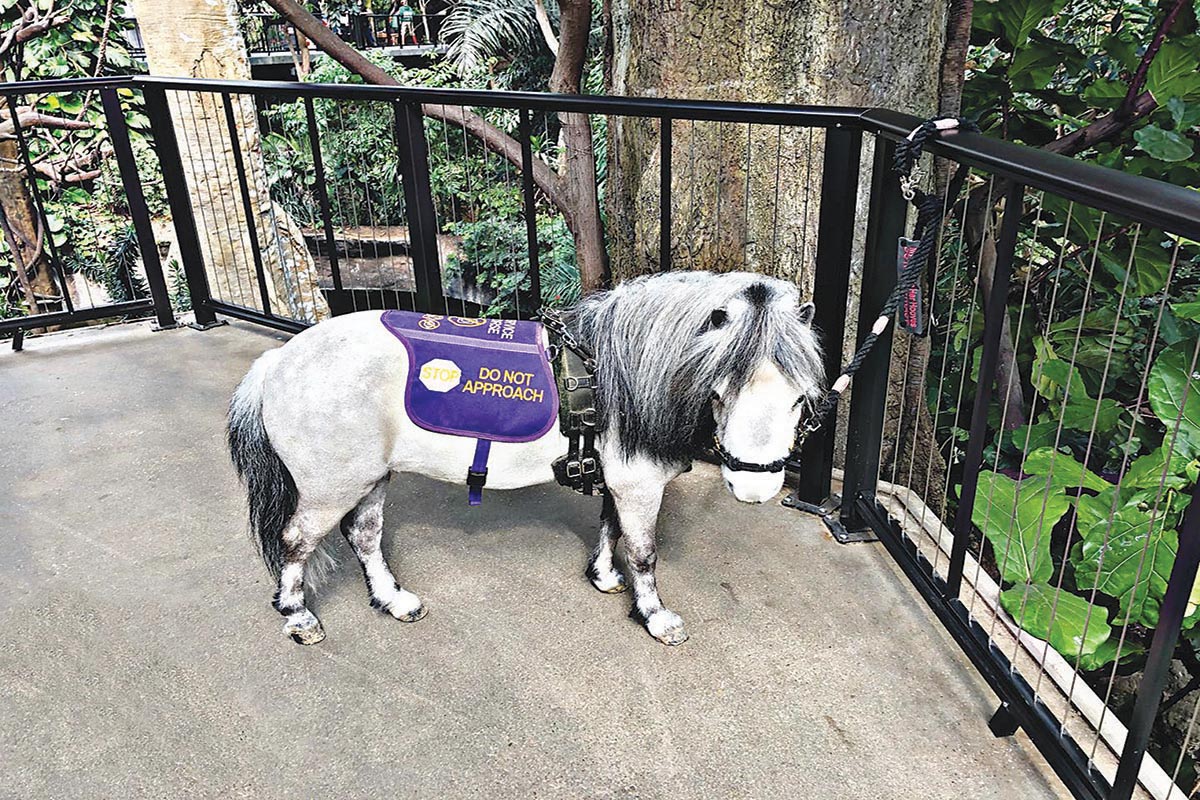
Equine Service Animals Grounded From Flying
After several handlers made the news for traveling with their equine service animal, they learned the Department of Transportation issued a new ruling. This time they more narrowly define a service animal as a “dog that is individually trained to do work or perform tasks for the benefit of a person with a disability.” Ultimately, it allows airlines to ban any non-dog service animal.
American Airlines announced that beginning Feb. 1, 2021, “animals that previously traveled as emotional support animals (ESAs) and no longer qualify as service animals may travel as carry-on pets or as cargo pets, as long as they meet the requirements.”
In part, some of the changes have been fueled by the blurred line between service animals and ESAs. Some travelers have pushed the limits calling rabbits, parrots, lizards, hedgehogs, and other animals ESAs by using forged documents. That has made it more difficult for handlers who follow the rules.
Follow the service minis profiled here on their Facebook pages for more information:
This article about equine service animals appeared in the June 2021 issue of Horse Illustrated magazine. Click here to subscribe!




